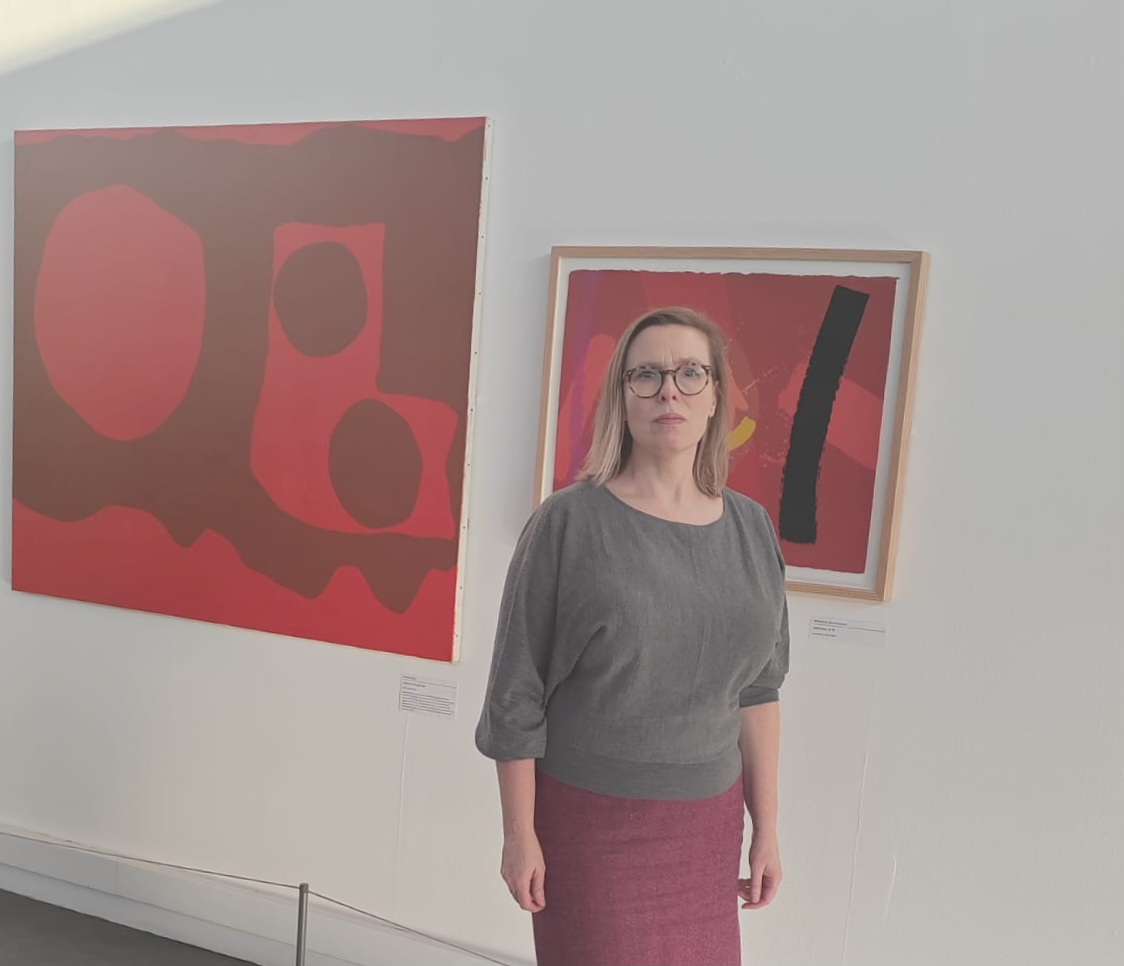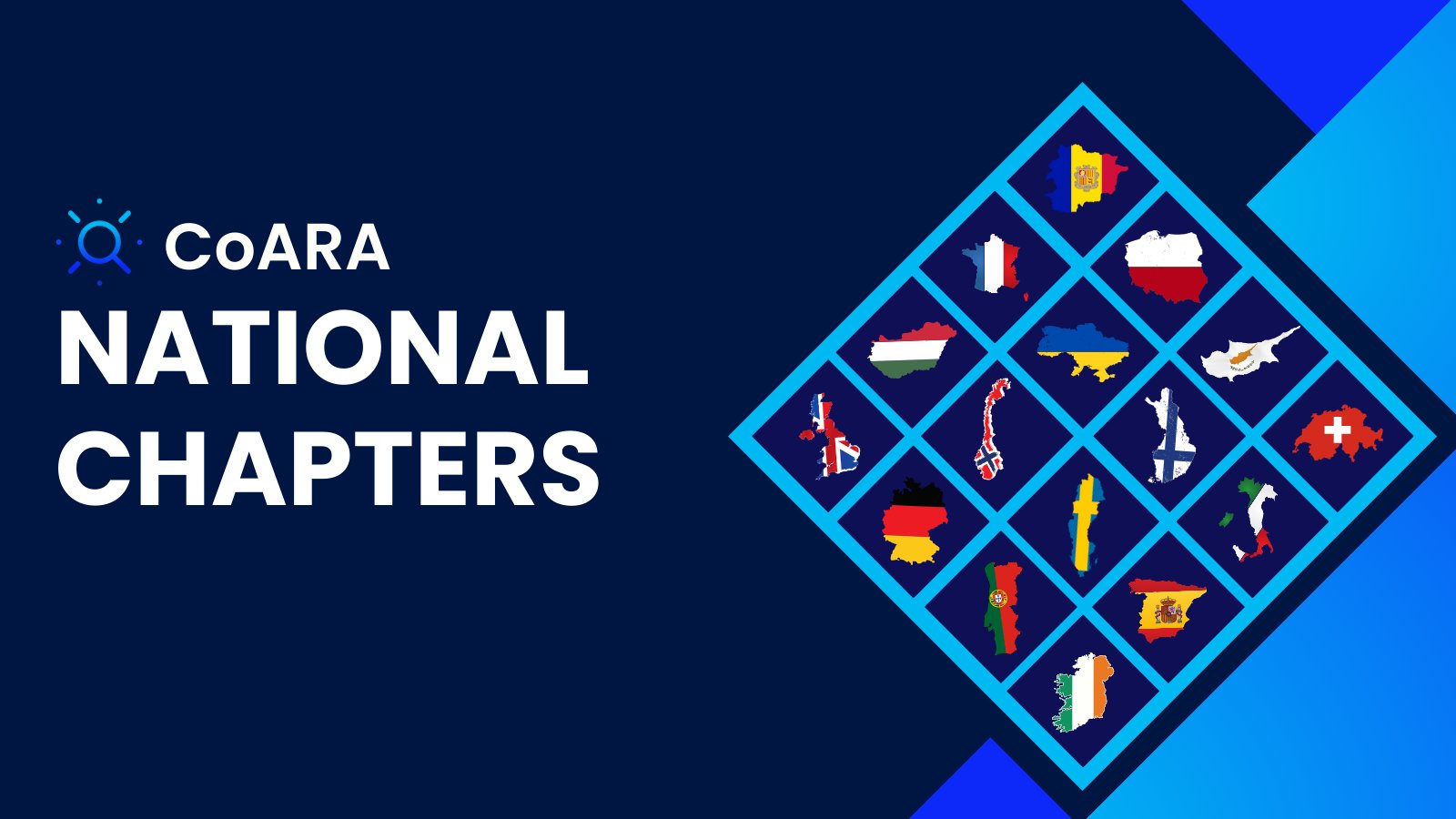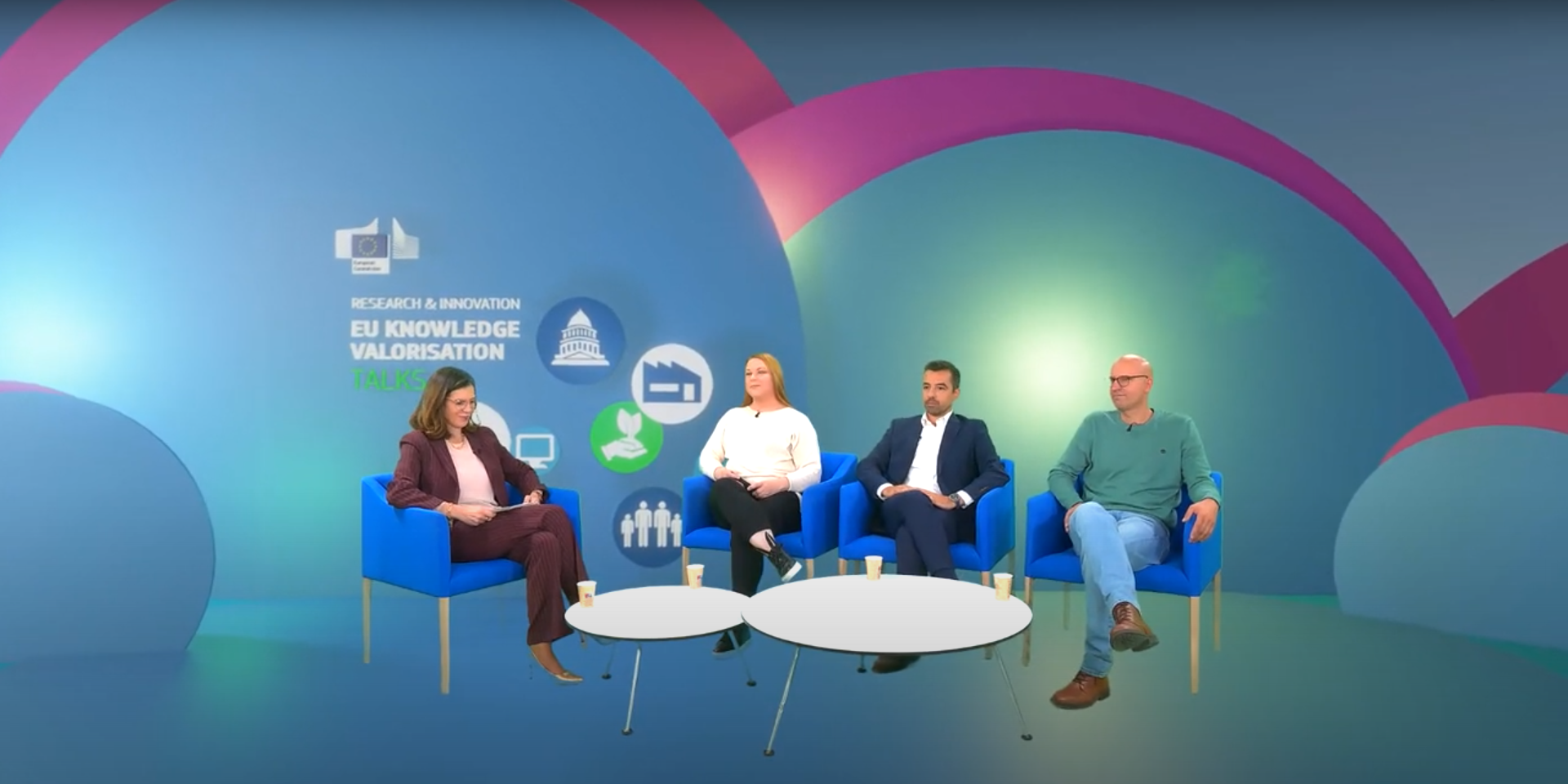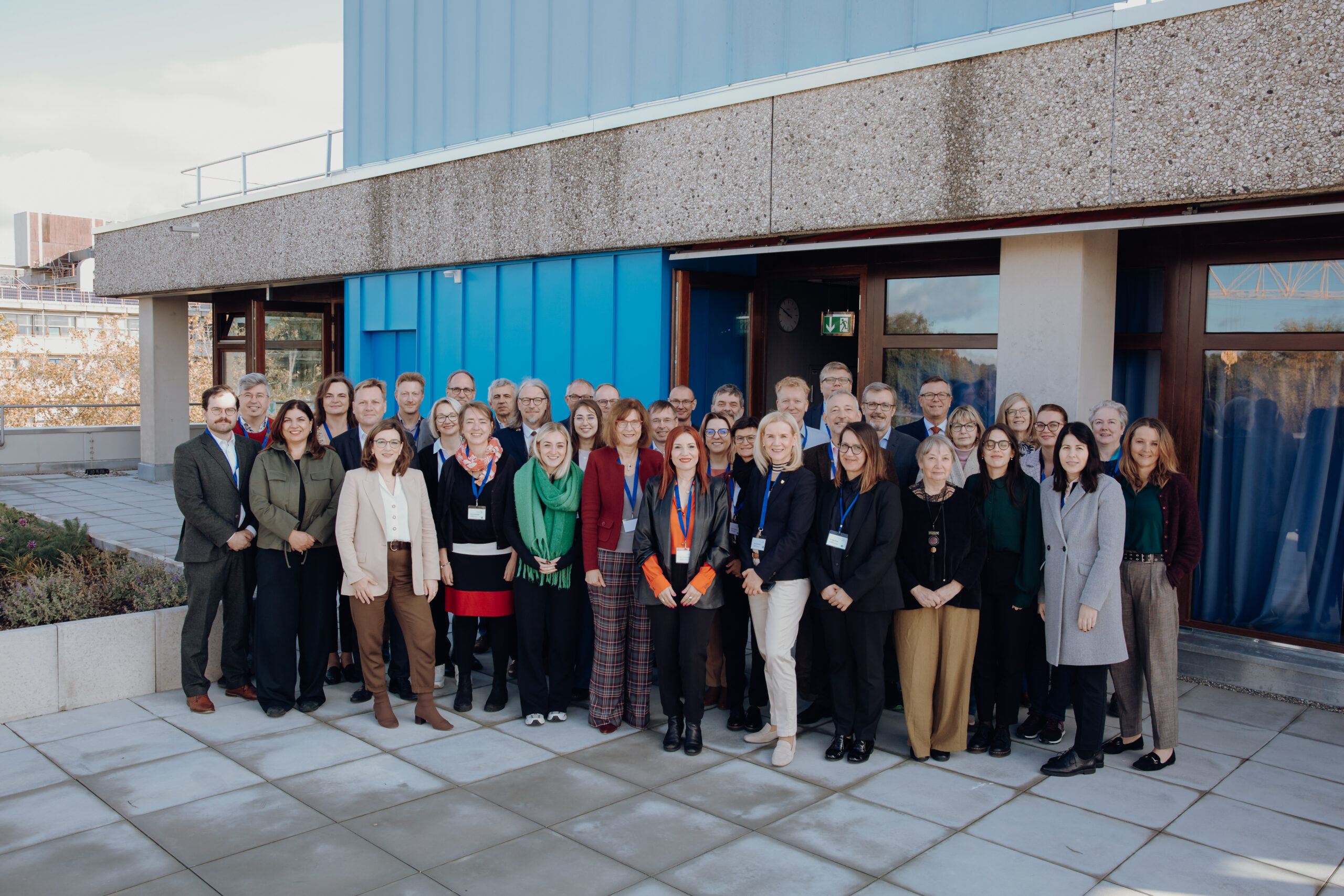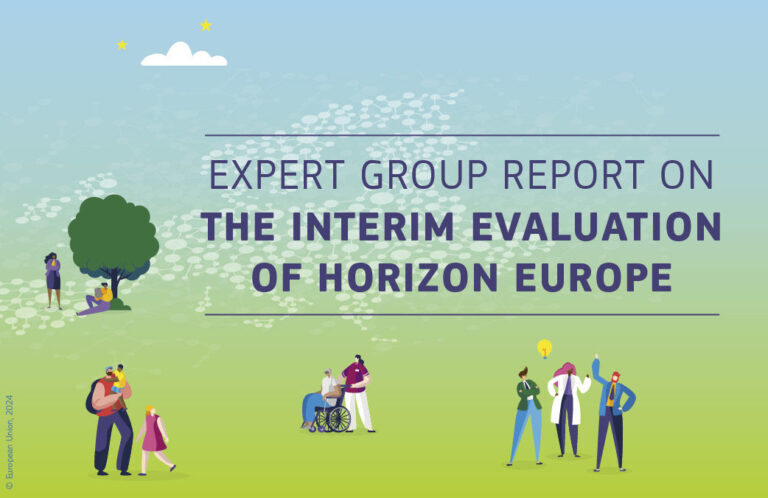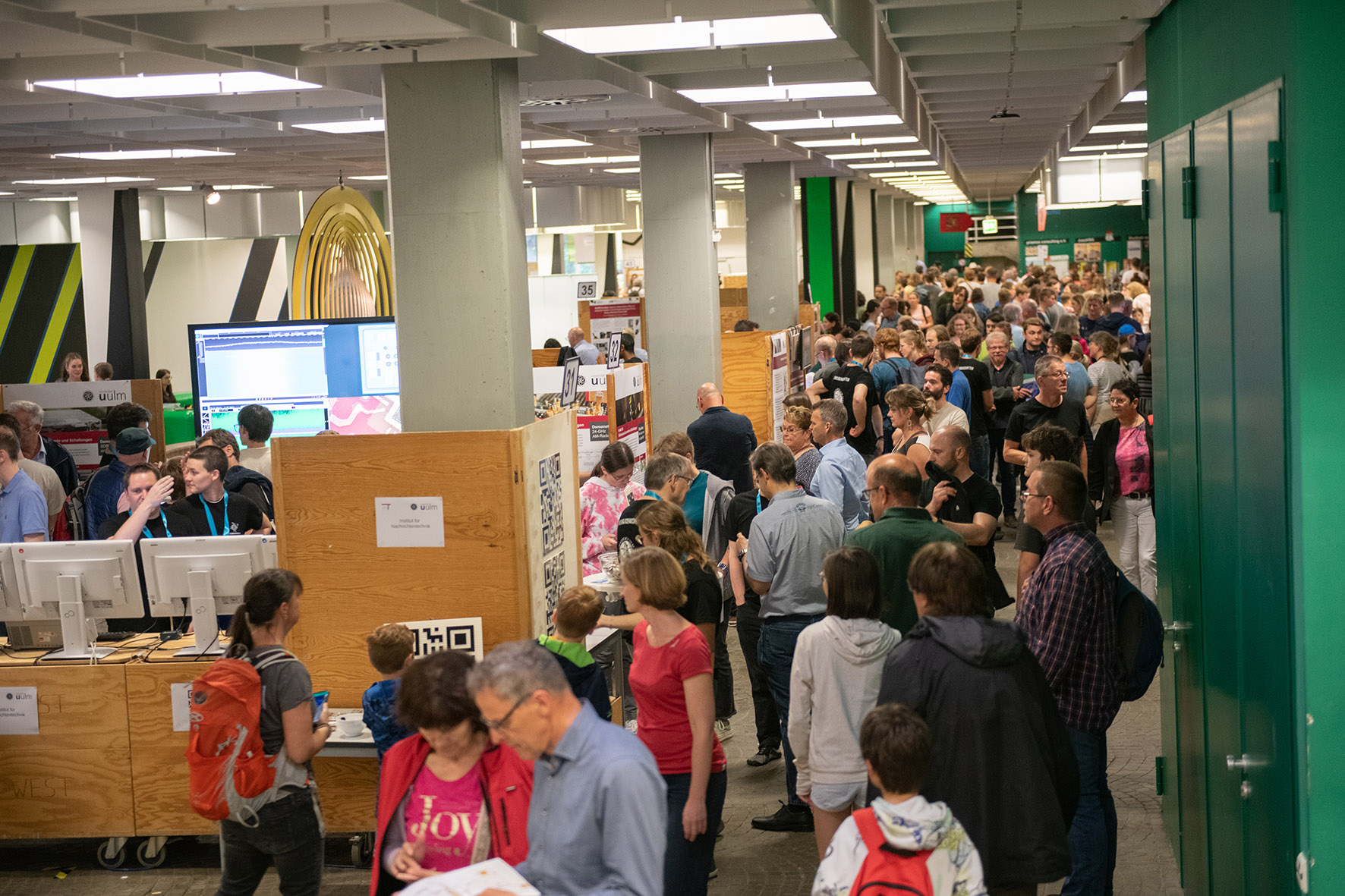Earlier this year, Professor Christine Ferguson visited the University of Rijeka’s English Department in the Faculty of Humanities and Social Sciences. Professor Ferguson teaches Victorian literature and culture within Stirling’s Division of Literature and Languages, and this was the first visit in the field of Humanities between the two YERUN network members. The aim of what is hopefully the first in a series of bilateral exchanges is to foster collaboration between the two institutions in terms of research and teaching.
As part of her visit to Rijeka, Professor Ferguson gave an invited lecture to the students and staff of the English Department entitled “Unhandling Cottingley: Arthur Conan Doyle’s The Coming of the Fairies 100 Years On,” held a number of meetings, and visited the University’s campus in Rijeka as well as its flagship conference and research facility, the Renaissance Palace Moise on the nearby island of Cres. The visit highlighted several already existing ties between Stirling and Rijeka which will hopefully serve to bolster the envisioned collaboration. For example, the Faculty of Humanities and Social Science’s Vice-Dean for Research and International Collaboration, Associate Professor Luca Malatesti, is a Stirling alumnus who remembers his alma mater with great fondness and highlights the great potential for the establishment of a co-tutelle PhD supervision scheme. Professor Ferguson has already collaborated with her host, Associate Professor Antonija Primorac, the head of Rijeka’s English Department, on Victorian and Neo-Victorian topics.
After this successful visit, Dr. Primorac conducted the interview below to both showcase Professor Ferguson’s own work and plans for a bilateral exchange between Stirling and Rijeka but also to highlight the potential for internationalisation efforts within the YERUN network.
AP: Christine, it was great to have you in Rijeka and I am sure your guest lecture inspired a lot of our students to read more on the topic of literature and science in the late nineteenth and early twentieth century. Your own work on this period’s complex relationship between rationalism and the supernatural has been vital for a better understanding of literary and cultural trends. Could you tell us a little bit about your current research?
CF: I am at work on two projects due for completion in summer 2024: a monograph called Open Secrets, which examines how occult believers from the 1840s to the 1930s used fiction to explore, develop, and share their unorthodox religious beliefs with readers attuned to popular genre writing, and a scholarly edition of Arthur Conan Doyle’s late-life spiritualist novel The Land of Mist, published in the mid-1920s when he was Britain’s most famous and active campaigner for the spiritualist movement. Excitingly, the latter contains a previously unpublished chapter that only recently came to light, and did not appear in the original publication. My goal with both projects is to show the importance of the literary fantastic to the formation and testing of new forms of spiritual belief in the increasingly secular landscape of nineteenth and twentieth-century Britain.
AP: In what ways does your research inform your teaching?
CF: In many ways! At Stirling, on our undergraduate honours course on the Modern and Contemporary Gothic, and formerly in our MLitt in the Gothic imagination programme, I encourage students to think about the role of occult and esoteric spirituality within the tradition of the literature of terror. I’ve also taught texts by the major authors I write about, some canonical, some now largely forgotten—Arthur Conan Doyle, Marie Corelli, Edward Bulwer Lytton, and Arthur Machen. Their writing allows us to rethink conventional understandings of the nineteenth century as a period dominated by scientific rationalism and confidence in technological progress; they conjure, sometimes quite literally, a distinctly weird version of the Victorian era that exists beyond, but also in dialogue with, the era’s cultural dominants. Finally, I am planning to take my editorial work on Doyle into the classroom by having students compare and annotate different textual versions—the manuscript, the serial, and book— of The Land of Mist, and use them to debate how we establish “final” or definitive versions of literary works.
AP: Your latest project at the University of Stirling, The Media of Mediumship: Encountering the Material Culture of Modern Occultism in Britain’s Science, Technology and Magic Collections, deals with what has generally been considered a niche topic in the humanities but which, within the fields of history of ideas and comparative religion, has been a dynamic and an insightful subfield. Could you comment on this?
CF: Esotericism Studies is a rich, interdisciplinary academic field that has grown in leaps and bounds over the last two decades; there are now centres and programmes for its study at the Universities of Exeter, Amsterdam, and South Carolina. It has sometimes drawn controversy from people who have falsely accused it of either promoting the belief in, or the practice of, occultism, but nothing could be further from the truth—the field no more endorses the topics it studies than scholars of mediaeval history call for a return to leeching. Rather, we seek to understand the history and culture of beliefs which, while never orthodox, have nonetheless played an immensely important role in the lives of ordinary people, and in the formation of new knowledge paradigms, if only as butt or target. The Media of Mediumship sought to tell new stories about museum collections whose scientific instrument holdings—cameras, x-rays, audio recorders, radios— may look as if they had only ever been used in rational or empirical contexts, but which have previously been used to test or support supernatural claims about the world, and, no less importantly, have inspired new creative representations of spiritual phenomena.
AP: In what ways does a transnational study of the history of occult ideas contribute to a better understanding of popular ideas and trends in popular culture, then and now?
CF: As the religious studies scholar Christopher Partridge has shown through his concept of “occulture,” the occult is culturally ubiquitous. From the late nineteenth century onwards, occult motifs, ideas, and symbols—the iconic Rider-Waite tarot deck, for example, Ouija boards, or Theosophical beliefs about reincarnation— have become part of a global popular cultural mainstream, instantly recognizable within youth and counter cultures from Toronto to Tokyo. In studying the popularization and dissemination of such tropes across the world, we gain key insights about how the local and the global interact on the international stage; we can recognize the multiple uses to which esotericism can be put by creative artists, activists, and cultural producers, many of which (even most?) have nothing to do with strict belief. From my own disciplinary perspective as a scholar of popular fiction, it would be simply impossible for me to make sense of the bestselling Victorian gothic novels I study— Stoker’s Dracula, for example, or Marie Corelli’s The Sorrows of Satan— without understanding the new and old occult traditions they alternately pirated, politicized, and parodied. Their contemporary audiences would have recognized and debated these elements of their work; to understand their reception and subsequent popular cultural influence, we need to as well.
AP: Your guest lecture in Rijeka earlier this year was on the Cottingley Fairies Case, an early 20th-century event that helped shatter the image of Arthur Conan Doyle as the rational creator of the über-rational detective Sherlock Holmes. It is also an interesting example of a cultural phenomenon that pitted science against pseudoscience without a clear victory for science despite all the evidence. What, in your opinion, would be the resonance of this (and similar phenomena of the early 20th century) today?
CF: From today’s perspective, the Cottingley Fairies case might strike us a relatively innocent or benign—if not entirely either— prelude to the destructive tide of image-based disinformation spread through social media in response to the Covid pandemic and the climate crisis. What fascinates me about the case is Doyle’s insistence that the images were simply unfalsifiable— that the young girls who produced them, Elsie Wright and Frances Griffiths, were too young, naïve, and innocent to have faked them; that the negatives could not possibly have been interfered with, etc. He made similar claims about spirit photography, insisting that the ghostly images that showed up in the images shot by photographic mediums such as William Hope could not have been produced by mundane means, or that, if they ever were shown to have been faked, that this was the due to interfering spirits rather than to deliberate deception.
No proof, however overwhelming, was ever enough for Conan Doyle to accept that the spiritualist hypothesis might not be the sole explanation.
We can see much more harmful parallels of this intractability today in, for example, the conspiracy theorists who claim they saw Dr Elise Granata die on camera after trialling the Covid-19 vaccine, despite the fact that she is still very much alive; consider also those who claim to have photographic proof that the 2023 Maui wild fires were caused, not by climate change, but by space lasers. The interpretation of even the most seemingly straightforward of images can be a highly-charged political act with highly destructive consequences. Learning more about the history and consequences of photographic manipulation can help us to be informed and ethical citizens.
AP: Recently it was announced that Britain would be rejoining the Horizon Europe research funding scheme. In your opinion, in what ways will this help rebuild research networks between Scotland and EU?
CF: The UK’s withdrawal from Horizon Europe was a massive blow, one that felt particularly painful here in Scotland where we were dragged out of the EU despite the majority of voters opting to stay in the EU during the 2016 Referendum. Rejoining the scheme will allow us to develop new, large-scale partnerships and research initiatives with colleagues across Europe, to tackle major scientific questions that require collaborative and transnational solutions, and to foster the mobility that is the life blood of knowledge creation. My own research sits within the “Culture, Creativity, and Inclusive Societies” cluster of the Horizon Europe programme, and I am very much interested in developing projects with colleagues such as yourself on the relationships between global literature, politics, and belief, particularly in respect to how they might inform attitudes towards social and climate change.
AP: What is your vision for research collaboration between Stirling and Rijeka and YERUN’s place in it?
CF: Stirling and Rijeka have much in common: we are young, small-nation universities that take a multi-disciplinary approach to the teaching of English Studies. At each institution, colleagues teach and research not just in literature, but also in linguistics, creative writing, and translation; within literature, there is a shared interest in the traditions, practices, and politics of global anglophone writing, evident at Rijeka, for example, in courses on Irish, Canadian, and African-American literature, and at Stirling in courses and projects on Scottish literary culture (see the “Books and Borrowing” headed by my colleague Professor Katie Halsey and the “Scottish Magazines Network” run by Dr Scott Hames) and in our vibrant postcolonial studies research group. There is so much scope for us to work together, and I would like to see colleagues use the mobility opportunities offered through YERUN to visit and lecture at each other’s institution, with a view to developing new funding bids together. Certainly, this is something I hope to do with you in relation to our shared research interests Arthur Conan Doyle and adaptation; he remains one of the U.K.’s most successful literary exports, and his reception across Europe has much to tell us about the different cultural understandings of the popular scientism his work is frequently enlisted to support. Beyond the pairing of individual researchers, future collaborations might also take the form of co-tutelle arrangements for PhD students and of interdisciplinary summer schools that would really expand the international reach and impact of both Stirling and Rijeka.
AP: Your visit to Rijeka was not the first visit to Croatia. What are the impressions you took away?
CF: I’ve been coming to Croatia since 2013, first to guest lecture, and then to establish an ERASMUS exchange between my then-employer (the University of Glasgow) and the University of Split. From the start, I have been struck by the incredible beauty of the country and the brilliance of the students I have encountered; indeed, on an early visit I recruited an excellent doctoral student who came to do a fantastic project with me on Neo-Victorian Oscar Wilde at the University of Glasgow.
While English is not the only official language in the U.K., we operate in a largely monolingual environment; it was a privilege, and a humbling experience, to visit a country whose researchers are working so incisively across a wide variety of languages, histories, and traditions. As a scholar of late nineteenth and early twentieth-century literature, with a keen interest in radical social movements, I am drawn to the fascinating history of Rijeka in this period, and am eager to learn more about its cultural connections to and networks with fin de siècle Britain in future visits. And hopefully that might include me beginning to learn a bit of Croatian!

